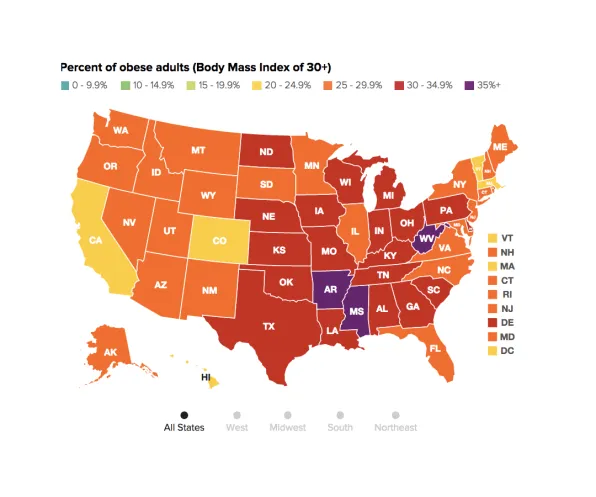America’s Growing Waistline: Understanding the Factors Behind the Obesity Rate
America’s growing waistline is a major health concern that has been on the rise for decades. According to the Centers for Disease Control and Prevention (CDC), the obesity rate in the United States has more than doubled in the past 30 years, with nearly 40% of adults and 20% of children now categorized as obese. This alarming trend is not only a personal health crisis for individuals, but also a public health crisis that is straining the healthcare system and contributing to a wide range of chronic diseases.
There are a variety of factors that have contributed to the obesity epidemic in America. One of the main culprits is the proliferation of high-calorie, low-nutrient processed foods that are readily available and heavily marketed to consumers. These foods are often high in sugar, salt, and unhealthy fats, and can lead to overeating and weight gain. In addition, the rise of fast food restaurants and convenience stores has made it easier than ever for people to make poor food choices on a regular basis.
Lack of physical activity is another major factor behind the obesity epidemic. With the rise of sedentary activities such as watching TV, playing video games, and using computers and smartphones, many Americans are not getting enough exercise to maintain a healthy weight. In addition, urban sprawl and the reliance on cars for transportation have made it difficult for people to incorporate physical activity into their daily routines.
Genetics also play a role in obesity, with some people being more predisposed to gaining weight than others. However, genetics alone cannot explain the dramatic increase in obesity rates in recent years. Environmental factors, such as the availability of unhealthy foods and the lack of opportunities for physical activity, are key drivers of the obesity epidemic.
Addressing the obesity epidemic will require a multifaceted approach that involves individuals, communities, and policymakers working together to make healthy choices easier and more accessible. This includes promoting nutrition education and cooking skills, increasing access to affordable healthy foods, creating safe and accessible spaces for physical activity, and implementing policies that support healthy lifestyles.
It is also important for individuals to take responsibility for their own health by making conscious choices to eat well and stay active. Small changes, such as choosing water over sugary drinks, opting for whole foods over processed snacks, and incorporating regular physical activity into daily routines, can make a big difference in preventing and managing obesity.
By understanding the factors behind America’s growing waistline and taking action to address them, we can work towards a healthier future for ourselves and our communities. It will take a collective effort to reverse the obesity epidemic, but with determination and commitment, we can create a culture of health and well-being for all.

